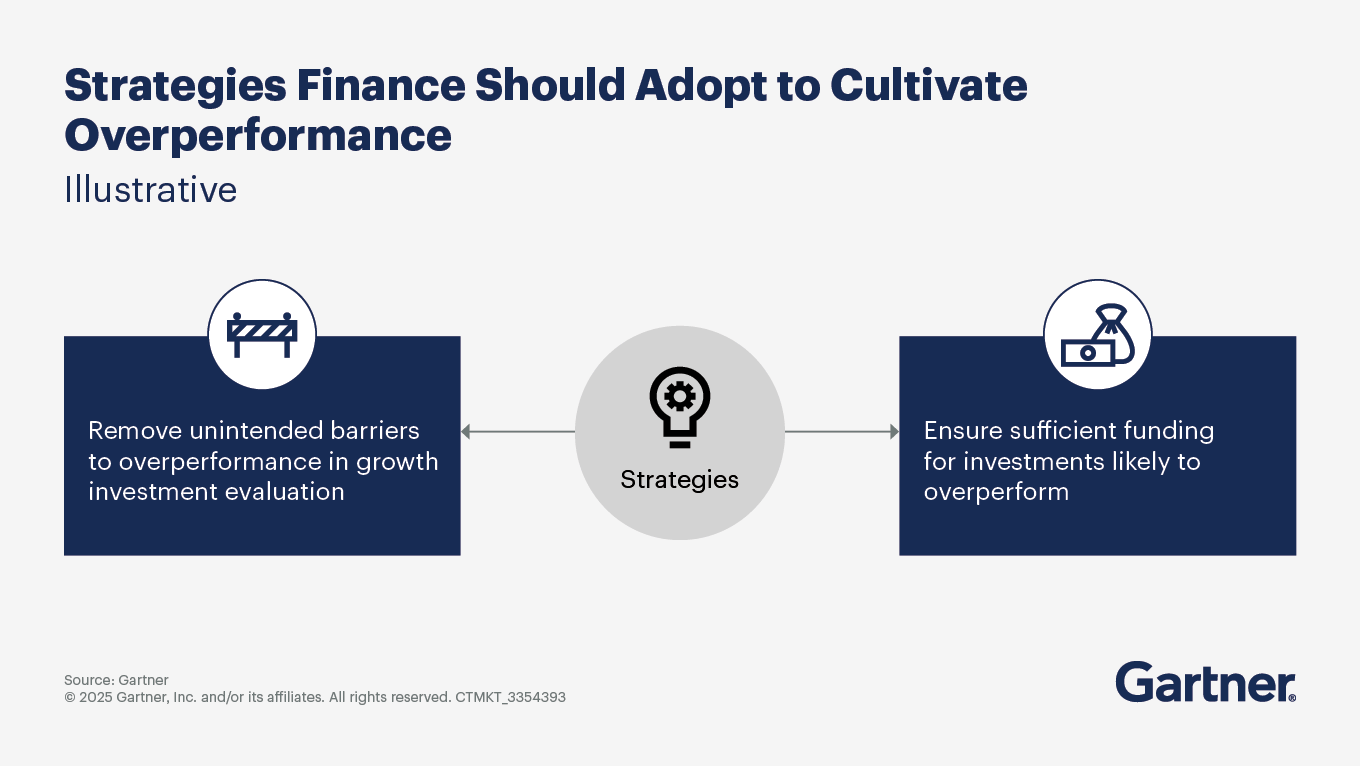Amid economic headwinds, rethink capital allocation frameworks to support sustained growth and returns.
- Gartner client? Log in for personalized search results.
Why CFOs must adapt capital allocation strategies to boost growth
Cautious consumers, stubbornly high costs and higher interest rates have increased the cost of borrowing. In this higher cost-of-capital environment, CFOs need a strategy for capital allocation that will achieve expected enterprise growth and returns. Taking a defensive approach to minimize misses can compromise return — but redirecting funding toward outperforming growth initiatives can help CFOs deliver the returns their boards and investors expect.
Cultivate overperformance to exceed growth investment expectations
During times of economic uncertainty and expensive capital, CFOs must reject the instinct to only fund “safe” investments and adopt a capital allocation framework that prioritizes high-return opportunities.
Remove unintended barriers to capital allocation
Seventy-one percent of finance teams are more concerned about losing money to a bad investment than about failing to provide further funding to a good investment that requires it. As a result, many prioritize investments that appear most likely to succeed. But even companies that excel at minimizing misses often see their growth investment portfolios underperform.
Common barriers such as bureaucracy, fear of failure and short-termism hinder overperformance. Removing these barriers makes it easier to allocate more funds to high-potential growth investments.
One solution: When evaluating and prioritizing capital allocation, forgo traditional hurdle rates — for example, by using a risk-free rate tied to bond rates to discount a project’s net present value. Another solution: Focus less on traditional financial metrics and more on testing and learning methods. Classify and assess investments using five risk evaluation factors: experience with the investment type, predictability, speed of positive impact, upside potential, and historical data for similar investments.
Ensure sufficient funding for investments that are likely to overperform
Flexible capital allocation is a hallmark of companies that achieve the desired internal rate of return across their growth investment portfolio. Yet only 38% of companies consistently reallocate capital from low-value uses to higher-value uses when business conditions change.
One way growth-efficient companies keep capital allocation flexible is through block funding. Block funding sets funds aside for specific uses or objectives — a product-centric (versus project-centric) model that allows for more iterative funding decisions. This approach helps create an ongoing funding stream driven by business needs and adjusted based on the delivery of business outcomes.
Another way to ensure flexible capital allocation is to provide transparency in how funds are used. Task financial planning and analysis leaders with facilitating two-way communication of the status and business impact of investments with the executive team and product leaders. This allows product leaders to monitor progress and link their activities to company priorities.
Capital allocation FAQ
What is capital allocation and why is it important for CFOs?
Capital allocation refers to the process of distributing financial resources within a company to maximize growth and returns. It is crucial for CFOs because effective capital allocation strategies can help navigate economic challenges, optimize investment returns and meet the expectations of the board and investors.
How can CFOs adapt their capital allocation strategies during economic uncertainty?
During economic uncertainty, CFOs can adapt their capital allocation strategies by prioritizing high-return opportunities, removing barriers such as bureaucracy and short-termism and employing flexible funding models like block funding. These approaches help ensure that capital is directed toward investments with the highest potential for growth.
What are some common barriers to effective capital allocation?
Common barriers to effective capital allocation include bureaucracy, fear of failure and a focus on short-term results. These obstacles can prevent companies from investing in high-potential growth opportunities. Overcoming these barriers involves adopting new evaluation methods and fostering a culture of testing and learning.
Attend a Conference
Join Gartner experts and your peers to accelerate growth
Gather alongside your peers in National Harbor to gain insight on emerging trends, receive one-on-one guidance from a Gartner expert and create a strategy to tackle your priorities head-on.
Gartner Finance Symposium/Xpo™
National Harbor, MD

Drive stronger performance on your mission-critical priorities.
